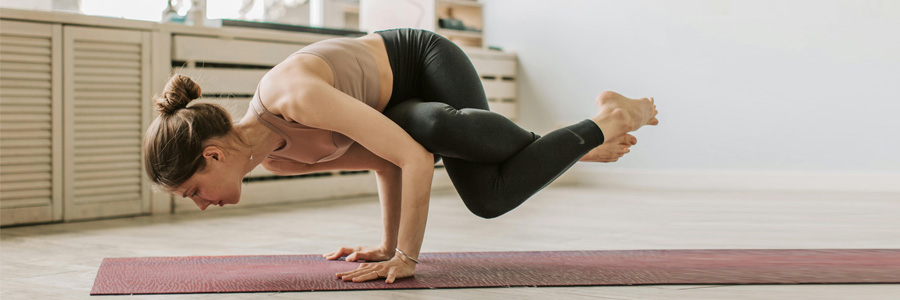The idea of fitness has drastically evolved over the past few years. No longer is the gym the only destination for effective exercise. With changing lifestyles, remote work, time constraints, and even budget considerations, home workouts have taken center stage. But do they actually work? Can you build strength, endurance, and flexibility from the comfort of your home without investing in expensive equipment or personal trainers?
The answer is a resounding yes. Home workouts can absolutely deliver real, visible, and lasting results when approached with structure, consistency, and purpose. Whether your goal is to lose weight, tone muscles, build stamina, or simply maintain a healthy lifestyle, you can achieve it all with the right home workout plan.
The Rise of Home Fitness Culture
The shift to home-based fitness didn’t happen overnight. It was a gradual movement that gained momentum due to technology, the accessibility of online workouts, and more recently, global circumstances like the pandemic that forced people indoors. People began to realize that effective training doesn’t need to happen in a gym filled with machines.
What emerged was a greater focus on bodyweight exercises, functional training, resistance bands, yoga, high-intensity interval training (HIIT), and virtual coaching. This democratization of fitness made wellness more accessible to everyone—regardless of physical location, economic status, or gym membership.
Why Home Workouts Can Be More Effective Than You Think
One of the biggest misconceptions about home workouts is that they are somehow less effective or serious compared to traditional gym routines. However, effectiveness is determined more by the quality of your workout, how often you do it, and how well it aligns with your fitness goals rather than the location or equipment.
Home workouts offer flexibility and convenience. You can fit in a workout between meetings, while the kids nap, or even early in the morning before the world wakes up. You save travel time, avoid crowded spaces, and have complete control over your schedule. This makes it easier to stay consistent—one of the most crucial factors in achieving real results.
Additionally, many home workouts are focused on compound movements—exercises that engage multiple muscle groups at once. These functional movements not only improve strength and coordination but also simulate real-life actions, making you stronger in your daily tasks.

How to Make Your Home Workouts Truly Effective
The key to success lies in creating a plan tailored to your goals. Start by identifying what you want to achieve—whether it’s fat loss, muscle building, endurance training, or a balanced routine that combines all three. Once your goal is clear, structure your week with a variety of workout types that complement each other.
Cardiovascular training can be achieved through activities like high knees, jumping jacks, mountain climbers, and burpees. Strength training doesn’t require heavy weights; bodyweight exercises like push-ups, squats, lunges, and planks can be incredibly effective when performed with proper form and increased intensity over time. Resistance bands or household items like water bottles and backpacks can provide added resistance for progression.
Flexibility and mobility can be improved through daily stretching routines or yoga sequences. These not only prevent injury but also improve posture and overall movement quality. Core training—often overlooked—is essential for stability and strength and can be done easily with exercises like leg raises, flutter kicks, and side planks.
It’s also vital to maintain progression in your training. This means gradually increasing the difficulty of your workouts, whether by adding more reps, extending the duration, decreasing rest time, or modifying the movement to a harder version. Without progressive overload, your body adapts and plateaus, making it harder to see continued improvements.
Staying Consistent Without Losing Motivation
Consistency is the cornerstone of any successful fitness journey. When working out from home, the lack of an external environment like a gym or group class can sometimes affect motivation. However, you can build powerful habits with small strategies.
Start by setting a fixed time for your workouts. Treat it like an appointment that can’t be missed. Create a dedicated workout space at home—even if it’s just a corner of your living room. Having a defined area psychologically primes your mind for exercise.
Wearing workout clothes, creating a motivating playlist, and even tracking your workouts in a journal or app can add accountability. Celebrate small wins, like completing a week of workouts or mastering a new movement, as they help maintain momentum.
Incorporating variety is another great way to avoid boredom. You can alternate between strength days, cardio circuits, yoga flows, and restorative sessions. Experimenting with online classes or fitness apps can also keep things exciting and introduce new techniques.

Nutrition, Recovery, and the Bigger Picture
While working out is critical, it’s only one piece of the puzzle. Nutrition, sleep, and recovery are equally important if you want visible and lasting results. Fueling your body with whole, nutrient-dense foods supports muscle repair, hormonal balance, and overall energy levels.
Ensure you’re consuming enough protein, healthy fats, complex carbohydrates, and hydration throughout the day. Avoid highly processed foods and sugar-heavy snacks that can slow progress. Planning meals that align with your fitness goals is just as important as planning your workouts.
Sleep plays a pivotal role in recovery and muscle repair. Without proper rest, your body can’t heal, which hinders performance and progress. Aim for at least seven to eight hours of quality sleep each night and consider integrating rest days or low-intensity activities like stretching and walking to help your body recover.
Real-Life Transformations Through Home Workouts
Thousands of people around the world have transformed their health, physique, and confidence through home workouts alone. These are not just one-off stories but a growing body of evidence showing that consistent, well-structured home routines can yield the same—if not better—results as traditional gym workouts.
Many individuals have lost significant amounts of weight, built lean muscle, and overcome sedentary lifestyles through daily 30- to 45-minute sessions in their living rooms. Others have healed from injuries, reduced stress, and regained mobility through gentle movement practices like Pilates or yoga at home.
The beauty of home workouts is their adaptability. They can be tailored to fit the needs of beginners, intermediates, and advanced athletes alike. You can scale exercises, adjust intensity, and find a rhythm that suits your body and your lifestyle.
Technology as Your Fitness Partner
One reason home workouts have gained so much traction is the advancement in fitness technology. Apps, virtual personal trainers, YouTube channels, smart watches, and online communities have made guidance and accountability more accessible than ever before.
With a simple phone or laptop, you can access guided routines, track your calories, measure progress, and even join live classes with instructors from around the globe. This level of interactivity brings the sense of connection and structure many people previously only found at the gym.
Fitness tracking devices also help monitor heart rate, steps, calories burned, and sleep cycles—giving you insight into your performance and recovery. These tools, while optional, can provide motivation and a clear sense of achievement.
Breaking Myths About Home Training
There’s still a belief in some circles that without lifting heavy weights or using machines, you can’t get stronger or leaner. However, strength is about tension, resistance, and challenge—not just gym equipment.
Your body is an amazing piece of equipment in itself. When used intentionally, with focus and discipline, it can create a lean, toned, and powerful physique. Think of gymnasts, martial artists, and dancers—many of whom train extensively using bodyweight techniques.
Another myth is that you need long workouts to see results. In reality, intensity and form matter more than duration. A focused 30-minute HIIT session can be more effective than a poorly executed one-hour gym workout. Quality always trumps quantity.
Building a Long-Term Habit
The most impactful workouts are the ones you stick to. Building a sustainable workout routine at home helps you adopt a mindset of consistency and long-term health, rather than quick fixes. Unlike crash diets or aggressive bootcamps, home workouts can evolve with you.
As you grow stronger and more confident, you can increase intensity, explore new styles like barre or mobility work, and set fresh goals. This evolution keeps things interesting and avoids burnout.
Developing a long-term home fitness habit doesn’t mean giving up on the gym forever—it simply gives you the freedom to choose what works best for your lifestyle at any given time.
Conclusion :
Home workouts are not a compromise; they are an opportunity. An opportunity to take charge of your health without barriers. An opportunity to develop discipline, resilience, and inner motivation. An opportunity to see real, lasting results—on your own terms.
With no commute, no excuses, and unlimited resources available online, the path to your fitness goals may be just a few feet away in your living space. Whether you have a yoga mat, a pair of dumbbells, or just your body weight, the power to transform your body and mind lies within reach.
What truly matters is your intention, your consistency, and your willingness to show up—even when it’s tough. Because in the end, home workouts don’t just change how you look—they change how you live.


